Even in digital age, banks and credit unions still value 'bricks-and-mortar'
When Elizabeth Hayes arrived in Maine in late 2014 to head up Westbrook-headquartered Infinity Federal Credit Union, she brought a wealth of experience from a St. Paul, Minn., credit union, where she played a critical role in its growth.
Now she's leading the way to similar growth for Infinity FCU.
“In the last two years, our assets have grown 22%, to $330 million, and we're serving over 2,000 more members,” she says.
With her management team and board of directors, Hayes identifies branch expansion as a key part of the credit union's growth strategy. Now, after further identifying prime growth markets, Infinity is investing $2 million to build a full-service branch at 29 Baxter Boulevard in Portland, with completion expected later this spring.
The branch will have both traditional teller counter and drive-through window service, as well as evolving digital-age components such as a 24-hour ATM and self-service kiosk. Because customers increasingly use online banking but still prize personalized interaction for services like loans, there will be a sit-down area for tellers and customers to conduct business.
In 16 years at Affinity Plus Federal Credit Union in Minnesota, Hayes played a critical role in Affinity's growth from $335 million to $3.6 billion in assets and 55,000 to nearly 200,000 members. Much of Affinity Plus's growth was due to branch expansion, says Hayes.
“Branches are important to communities,” she says. “A lot of people do their banking electronically now. But people want to see you have a presence in their community.”
Bricks-and-mortar still matters
In this digital age, bricks-and-mortar branches nevertheless continue to proliferate and evolve right along with banking technology.
“Twenty-five years ago, there was telephone banking,” says Christopher Pinkham, president of the Maine Bankers Association. “As the web came in, we offered online banking. As mobile became standard, we rolled out mobile. The earliest ATMs only delivered cash. Currently there are smart ATMs that have replaced whole physical branches. The next generation that's arrived in a couple of places in Maine is the kiosk, with a TV screen, and you're looking at a teller who's in a central location. I'm not sure anyone has the corner on where this is headed, other than everyone's scrambling to ensure they have many available channels.”
A 2015 report by the Federal Deposit Insurance Corp. noted that the rise of electronic banking has resulted in a decline in the number of transactions at physical banking offices, with one nationwide study showing the average number of teller transactions per office declined by 45% between 1992 and 2013. The decline also resulted in a slowdown in branch-generated revenue growth. But, the FDIC noted, customers still like their local branches. Among most households that prefer online or mobile banking, most also continue to visit tellers to access their accounts.
Financial institutions continue to re-think their branch business model, with new technologies and right-sizing in mind, according to a November 2016 report by Aite Group, a Boston research and advisory firm.
“Next-generation customer engagement solutions are aiming at creating a more consistent experience and advanced functionality across all channels. While digital channels are taking over after the onboarding process, the future of the branch channel lies in new customer acquisition, the sale of more complex products, and more pointed guidance for customers wanting face-to-face interactions,” the Aite Group report states.
While credit unions are structured differently from commercial banks, they're seeing the same consumer trends.
“The bottom line is that people want to use different delivery channels for different reasons,” says John Murphy, president and CEO of the Maine Credit Union League, which represents 58 credit unions in Maine. “The fastest-growing product today is mobile technology. However, people still want to come into the branch occasionally. You'd think the millennials would strictly use their smartphones to conduct business. But they put high value on branch locations. So if you're in the financial services business today, the challenge is to support all of the channels” — ATMs, branches, online banking and mobile applications.
Both banks and credit unions continue to invest in locations that better serve the customers.
“The demise of the branch has been greatly exaggerated,” says Murphy. “The fact is consumers want multiple delivery channels today, including being able to come into a branch.”
Branch office as launch pad
At Midcoast Federal Credit Union, President and CEO Joe Gervais says its office in Freeport, which opened last summer, and redevelopment of its site in Bath will allow it to expand in both communities. Midcoast was founded in Bath, which still has the highest transaction volume among five locations.
“However, we ran out of space and had to decide whether we were going to keep it as our operational center or expand our branch services,” Gervais says. “We opted to relocate operations to Freeport and keep Bath as a retail location for our members.”
Midcoast paid $1.5 million for the Freeport property and invested another $800,000 to fit it out. As of July 2016, it serves as its headquarters and has a retail branch. In the meantime, Midcoast is constructing a new retail branch at the Bath location, to open in June, and will tear down the older structure.
That's a vote of confidence in the value of a physical presence, he says.
“We look to have a brick-and-mortar presence in order to serve our current members' needs and engage new relationships” — which includes teaching members how to use apps — “knowing that, beyond the initial engagement, their likelihood of using the branch will be limited by our self-service technology offerings,” he says. “But it's important to have a physical presence they can go to when needed. So for us, it's a launch pad.”
Richard Lachance, president and CEO of Connected Credit Union, agrees.
“People in Maine, probably more north of Portland, still like that interaction of going into a branch and conducting business with a live person,” says Lachance.
Last year, Connected invested $2 million in on the purchase and construction of a branch in Augusta that combines two smaller, limited-service Augusta branches. The site offers additional office space and parking, along with better visibility and room to grow. Lachance said it has resulted in growth in membership and increased loan activity.
“Although we offer the technology and there's a certain segment of membership that uses that, there's still a large segment that prefers to do business in person,” Lachance says. “Maine is a little unique in that, and I think that's one reason you see a lot of branches popping up. There's still a lot of expansion going on in Maine among banks and credit unions.”
Further expansion ahead
At Infinity, Hayes anticipates opening another four to five branches in the next five to six years. Infinity is wrapping its branch strategy around high-growth communities, she says. It has offices in Westbrook, Bangor, Arundel and, for now, 4 Davis Farm Road in Portland.
The Baxter Boulevard site in Portland will replace Infinity's branch on Davis Farm Road, in the North Deering neighborhood.
The Davis Farm Road site is three miles from Infinity's high-performing Westbrook branch, and Hayes says it's likely that Westbrook has been drawing customers away.
“So we started to scout around town to look for up-and-coming markets” — markets with a lot of consumer potential, with the decision also informed by a customer survey, she says.
The Baxter Boulevard location is near Hannaford and the University of Southern Maine. It will offer an up-and-coming business and residential community as well as steady traffic. In addition, a site is in sync with Infinity's new small business services channel, offering loan and business development support services, including expert-led small-business workshops, with expanded marketing outreach to spread the word.
“So it's nice to have a building, but people need to know you represent more than just the building,” Hayes says. “We're the oldest credit union in Maine”— founded in 1921 in Portland — “and one of the largest in Maine. But not many people know much about us: In the past we haven't had a strong marketing plan. Our push is starting now.”
It took just over a year to find the Baxter Boulevard site. Parameters included having room for a moderate-size building of 2,800 square feet, a drive-up, parking and green space. In keeping with today's range of banking services, it will offer teller service, self-service kiosks and sit-down stations.
“We wanted to have traditional services for people who want to bank in traditional ways,” Hayes says. “But at the same time, we wanted to be able to support people who just want a quicker transaction and are comfortable with technology.”
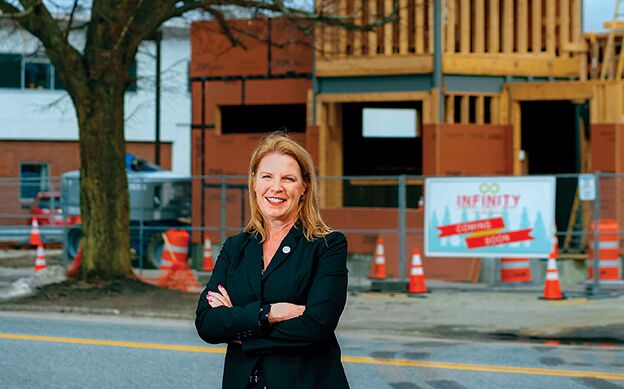

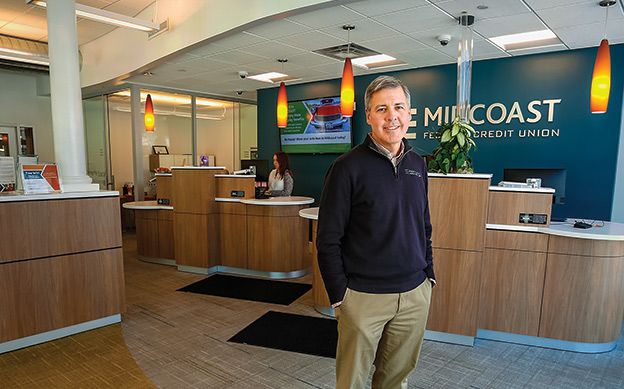
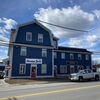





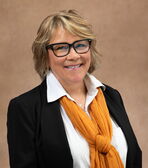

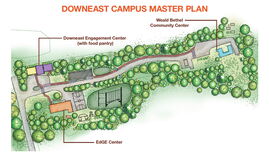





Comments